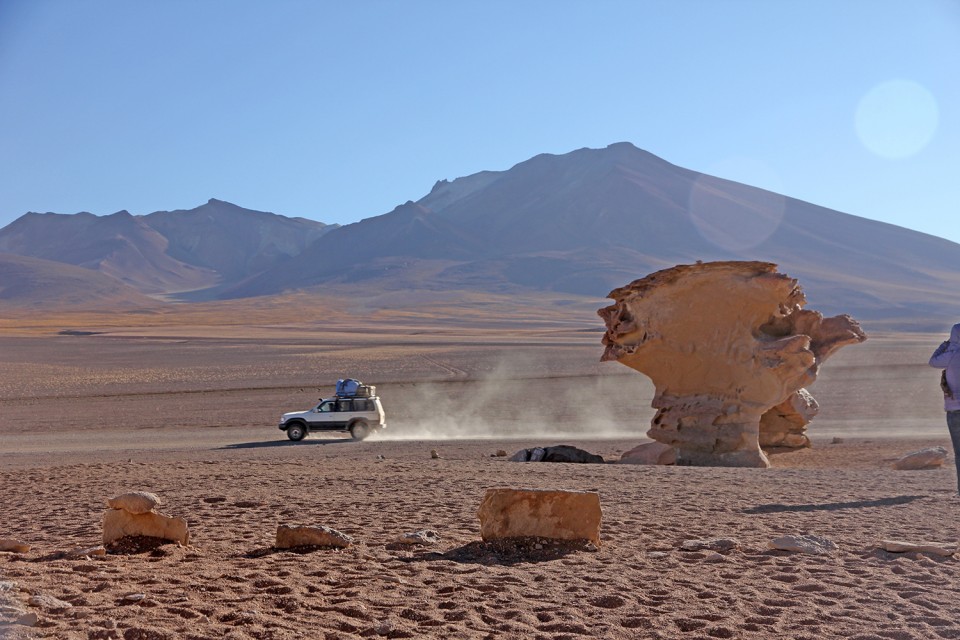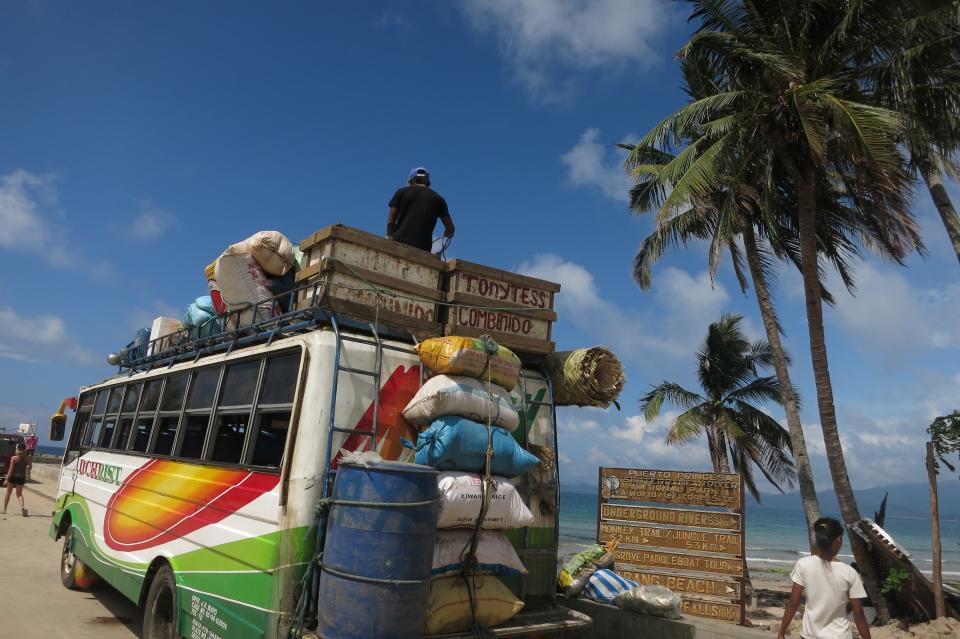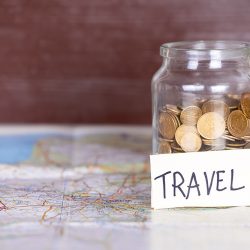Picture this: you’re on a tiny island off the eastern coast of Thailand. You’ve been snorkelling at spectacular coral reefs swirling with tropical fishes, ate the best Pad Thai you’ve ever had, and now… it’s time for a nap. You find yourself a hammock—and as the sound of the waves gently lulls you to sleep, you dream of all the wonderful places you still have left to see.
Sounds nice, right?
But instead, you’re stuck behind your desk kicking yourself for not taking the leap when you had the chance. Arrggh!
Traveling long-term can be one of the most rewarding things you do in your life. Sadly, it’s all too easy to say you’ll do it “someday” and never actually do it. I know all too well, because for a long time this was me!
Having since traveled long-term and gained some of the most unforgettable memories of my life, I want to encourage anyone to also take the leap. Setting off on a big journey might not be easiest at first, but the rewards are completely worth it.
Here’s how you can take the leap and travel for many months or even years.

Step 1: Find your opportunity
The biggest obstacle for many people is to actually find the time to travel. Most of us are locked into 9-to-5 schedules with only limited holiday allowance.
If you’re lucky, you might find a travel opportunity just land on your lap!
For me, such an opportunity came when I was laid off back in 2012. One morning, everyone at my workplace received an envelope, each with one of two possible messages inside. My envelope was of the ‘short end of the straw’ kind. I had been let go in a mass layoff… my heart sunk.
It was terrible news, though thankfully it came with a severance offer. I quickly realized that this was my chance: I now had the money and the time to travel. Later I concluded I was very unhappy with my job anyway, so the situation had been a blessing in disguise.
Of course, maybe such a golden opportunity won’t come to you on a platter. In that case, you’ll have to create your own.
This means you’ll have to be willing to let go of your usual day-to-day life for a while. If you have few commitments at home, this will definitely be easier. If you’re deep into career or family mode, it might mean having to work up the courage to step off the hamster wheel.
I know that being a career hamster can be nice, comforting even. But if you want to travel far and wide, it’s likely you’ll need to quit your job or put your life on hold. Break free of the cage and be that travel hamster you’ve always wanted to be!
There may be other options to consider though. For example, a travel buddy of mine was able to take 9 unpaid months off thanks to a slow period in her organization. It was a win-win: the company could reduce overhead for a while, and she could have her old job back after her world trip was over.
There are also many types of jobs that let you travel, including digital nomad jobs, or ‘analog’ jobs you can do in travel locations around the world.
If such lucky opportunities don’t exist for you, the only way may be to simply save up some money and then hit the eject button. Remember that many people regret not having traveled in their lives, but no one regrets having done it!

Step 2: Get the funds together
There are clickbait articles out there claiming you can ‘travel the world for free’, but the reality is that long term travel is going to cost at least something.
Luckily, travelling the world doesn’t have to cost the world. Having the discipline to set aside money to go into your travel fund is key, as is making smart choices about where and how to spend those funds.
I learned this from experience, managing to stretch my severance pay and some savings into paying for a 2-year round-the-world trip (the start of my 10+ year life of travel!). On average, I probably spent about $1000 per month. The trick is to pick your destinations wisely and to travel “like a traveler” rather than someone on a holiday who is always ready to splurge.
If you’re from a high-income country, you can save up relatively easily and get a lot of purchasing power elsewhere. If may seems obvious, many people don’t seem truly aware of this incredible opportunity! Some countries truly are amazingly cheap, while still being comfortable and safe to travel.
Even if you can’t afford to go somewhere super expensive like Switzerland or Fiji, at least you could travel to some more affordable destinations.
It’s difficult to talk raw numbers as everyone has a different travel style, but I took a shot anyway at answering how much it costs to travel for 1 year.
Even if you’re planning to work from the road, it’s a good idea to build up some financial cushion before you go. For tips on how to save up, check out blog posts like this or this one.
If you’re on a tight budget, learn how to travel cheaply. When you’re traveling long term, you can often use time to your advantage: with greater flexibility, you can travel in the off-season, go to cheaper or more remote places, and outsmart the average tourist on a shorter holiday.
Step 3: Decide on a type of long-term trip
Long term travel can take different forms. How you structure your trip will affect many things—from packing to budgeting to travel logistics—so it’s good to have a rough idea for what your trip will look like.
Backpacking trip
This usually involves slow-traveling overland by bus or train, following a continuous route through a country or region. For example, you might snake your way through each country in Southeast Asia in a more or less sequential way. This travel style can be particularly cheap as you’ll spend less money on flights and can avoid expensive cities. Here are some of the top backpacking routes around the world.
Round-the-world (RTW)
A round-the-world trip involves flying around the world either west-to-east or east-to-west, touching multiple continents along the way. Some airlines offer special RTW tickets, though there are several different ways to book a round-the-world trip. An RTW trip can be more costly due to the number of miles travelled (and the need to include certain countries), but it’s a great way to tick lots of items off your bucket list.
Digital nomading
Remote workers often use more of a hub-and-spoke approach. Rather than following a continuous travel route, they might hop between specific places that have fast internet, good co-working facilities, and many other remote workers. For example, spending two months on Bali can lead to three months in Medellin and then onto two months on Gran Canaria—each time moving to the next fixed but temporary base. You can read more about how to become a digital nomad.
Each of these trips requires a different approach to planning. Having dabbled in all three, I would say that digital nomading is the trickiest to do if your goal is also to see the world, as the demands of working remotely can put many limitations on your trip. By far the best way is always to travel without having to work, though working as a digital nomad is surely the next best option.
Step 4: Downsize your life
If you’re going away for a long time, you’ll want to reduce your overhead at home as much as you can.
Sub-let or get rid of your place to live, sell stuff you don’t need, and cancel unneeded subscriptions. Forward your mail to a relative or a PO box.
Downsize as much as possible, then put your remaining belongings in storage. I didn’t get this part right when I first went on a big trip on a whim! I kept a whole bunch of IKEA furniture in self-storage (among other things), which meant I had to pay around €350 a month for storage space, creating a constant drain on my funds. I would have saved a ton by just selling and buying new furniture later.
Letting go is difficult, but for maximum freedom, it’s nice to let go of as much as you can, if only temporarily.

Step 5: Ignore the naysayers
Let’s face it, dropping what you’re doing to travel the world isn’t the norm.
Taking a gap year or sabbatical may be much more accepted in some countries (hello, Australia), though in many places it’s quite uncommon, and in a few it even often seems a little stigmatized (hello, United States).
Friends or family who haven’t done a trip themselves might question your plans, but you’ll need to stick to your guns and be a bit of a trailblazer. Keep in mind that once you’re on the road, you’re going to meet lots of people just like you, and suddenly your choices will not seem nearly so outlandish.
Months can pass between deciding you want to travel long-term and actually beginning on your journey. While you’re on your way to actually doing it, pay no heed to those giving you reasons to doubt, especially those who have not travelled extensively themselves.
Step 6: Take care and prepare
Good news: these days, you don’t need to be some kind of hardboiled adventurer type to travel long-term!
But it is true that it’s very different from just going on a holiday, and your preparation may be quite a bit more involved.
I think it pays off hugely to properly prepare for your trip. By prepare, I don’t mean planning every step of your journey in advance, because this is often impractical for a long trip. While it’s good to have a rough plan for places you want to visit, the detailed day-to-day travel logistics are usually much better to work out as you go.
However, it is very helpful to learn all about packing light, dealing with visas, travel health, safety, money and currency exchange, dealing with language barriers, and so many other things. Reading up on these topics before you go can help you avoid many rookie mistakes later.
While there’s a certain romance to the idea of jumping onto a last-minute flight with only a hastily packed suitcase, in reality it’s much better to think about the gear you’ll be bringing and knowing about all the practicalities of extended travel.

Step 7: Get over your fears and go!
When you first get the idea to travel, you’re super excited. I remember this clearly from when I first decided I wanted to do it.
You can easily picture yourself hopping from continent to continent, or backpacking your way through some far-flung part of the world.
In your mind, it all plays out like a big travel highlights sizzle reel. Every day, you wake up screaming “YOLOOOO!” and high-fiving yourself for the amazing adventure you’re going to have.
But after a while, that initial excitement turns into trepidation. The practical realities can easily feel overwhelming, and fear of the unknown can make you spiral into negative thoughts. I get emails from people all the time who also suddenly find themselves in that “oh shit, what am I doing?” phase.
Rest assured, this is entirely normal. The Swedish even have a word for this: Resfeber. It means “the tangled feelings of fear and excitement before a journey begins”.
Don’t let that resfeber get to you. Take a deep breath and trust that things will feel very different once you’re actually on the road.
By the way, to help prepare you to travel long-term (and maybe calm your nerves) I wrote a book called Travel the World Without Worries. It combines structured practical advice with honest anecdotes from the trail. It helps you go from the initial inspiration phase, to the actual packing/planning/preparation, and onto dealing with any adversities while you are travelling.
If you feel overwhelmed at any point, stick with it. Remember that soon you could be climbing epic mountain tops, meeting locals in the strangest of places, or swinging in that hammock on a tropical beach without a care in the world… if you take the leap, you’ll definitely be rewarded.
Some links may be affiliate links, meaning I may earn commission from products or services I recommend. For more, see site policies.







I am deciding a phase in my life about traveling and living alone, I believe that I am prepared but there is a certain fear sometimes, but your article clarified many things and helped to open my mind, all I lack is courage, but no I will let myself be affected by negative thoughts, as you said
Thank you for your content.
Wow… Really useful blog not only for how to travel for long term, but also how to live a life. Digital nomad has many struggles but, like you suggested by saying no to naysayers and believing in yourself you can really live a life worth living. Thanks a lot !
I really like your share. I am 26 years old but have never had a long trip, I travel only 3 days maximum and then return home, returning to work too busy everyday. I do not have the time or money to go anywhere in the long run and what I feel is the best in your writing is the practical experience, dare to dare to experience. Thank you for sharing so much
I really enjoy all of your suggestions and ideas on cheap and easy traveling! Such good insight. Do you have any posts on people traveling long term in a vehicle / camper van? This is my preferred method of travel for a couple of years. All over the world. Are there some massive downsides to this that I’m not seeing? obviously there are fuel costs, but I’m cutting out ticket and a bit of accommodation. Smart right? and so much fun. Traveling in a van is probably the best thing you could ever do with your life. I would suggest quitting your job and exploring the world.. and making that your job.
Hi Tori. I have done my share of road trips but not for the long term. It does make a lot of sense. Potential issues may include breakdowns or repairs, paperwork at borders (it’s a bit more involved), and not everywhere can be reached by car. (There are many barriers around the world like the Darien Gap, the Sahara, and various islands/landmasses with no car ferries between them). BUT… the advantages you mention are very strong and the disadvantages you can work around. I suggest having a look at this site which may have a lot of info relevant to you: http://wikioverland.org/
Well done Marek! Diving in full bore by committing 100% to a life of travel – long term – is the way to go. Advice shared from this 7 year digital nomad 😉
Ryan
I don’t call it to quit the life, I said that I’ve changed my life style
I took the leap five months ago after recovering from a near-fatal accident that left me unable to return to a “normal” job (which I was dreading anyway!). Then my wife asked me for a divorce and I’m now in Chile teaching English (online…much better pay). I’m saving up money to go fully nomadic next year, probably around my birthday. Your guide is a huge first step as I begin preparing. Thank you!
Great to hear, Sean. It’s often when those crazy life changes happen that you’re pushed into travelling! Glad to hear you’ve found your calling to go nomadic as it’s incredibly exciting to do 🙂
i just came back from a month long travel.. and compared to others who are away for a year or more, this one is really short.
i do hope i can find ways to travel longer next time
brilliant advices for me who is a bit feel nervous about travelling.While reading I feel myself relaxed. I will plan a travel in short time and keep your advices in my mind
Hmm it seems like your site ate my first comment (it was extremely long) so I guess I’ll just sum it up what I wrote and say, I’m thoroughly enjoying your blog.
I as well am an aspiring blog writer but I’m still new to everything.
Do you have any tips and hints for newbie blog writers? I’d definitely appreciate it.
Hi, I’m sorry your comment got eaten! Sometimes my comment filters get a bit overzealous. Thanks for your kind words 🙂 I wrote a few tips (a lot time ago now) for newbie bloggers here. But I’m also working on a couple of YouTube videos on the topic, so you might want to subscribe. Hopefully I’ll be able to share some meaningful tips soon.
Great advice!
I’ve got one more to add to your list, take your family/kids! Of course it makes everything else far more complicated, as I have discovered in the planning process!
We are leaving in September, taking 2 teenagers out of high school for a year. My husband needs to be in Europe and China for work, so we will split our time between those general areas. Starting in Barcelona for 2 months, then Bangkok for a week, Cambodia for a month and finishing 2017 in Bali. Come mid January we hope to cover more of SE Asia, Morocco & Jordan, before heading back to Europe.
If naysayers are a problem for one person, I get looks of shock, mixed with comments of “that’s cool”. I’m not sure if what their face says or their words are to be believed. Anyway, we are booked until the end of 2017 – the wheels are in motion!
Hi Marek
Just finished reading your article, brilliant. Ive just come back from a 6 week trip in Peru and Bolivia, and loved every minute. I now have the travel bug and wanting to do a long term journey. Have a property in Australia that i can sell and make some cash that would fund the trip. Im 43 and have begun telling my friends and family my plans, and they all think ive gone mad, and having some kind of breakdown or mid life crisis. The trouble is im in job that i no longer enjoy and tired of being stuck in the rat race. Your story is inspiritional and the more i research and think about the idea the more bigger the YES gets!!
Love to hear this! If you feel stuck in a rut there’s nothing to stop you from changing course and going on a long term journey. Good luck and hope you’ll make it happen!
Hayley – I’m 47 and I wonder if I am crazy to do this travel thing. I retired from my career of 25 years at the end of 2016. My husband is able to work from Europe and China, so we are taking our 2 teenagers out of school to travel for the year. No point in sticking around one place, my husband will come and go as he needs to. But the kids and I get the full adventure immersion!
My choices have made the trip far more complicated than a solo trip. There is complete freedom in that. So I don’t think you are crazy!
Hi there
Do you have any posts on people travelling long term in a vehicle / camper van? This is our preferred method of travel for a couple of years (hopefully). Mostly concentrating on Europe.
Are there some massive downsides to this that i’m not seeing? obviously there are fuel costs, but we’re cutting out ticket and a bit of accommodation.
I say a bit of accommodation because we don’t plan to live in the Camper van all the time. Perhaps when we find an area we want to spend more time in we would like to rent out a place etc.
Cheers
I haven’t covered this topic as I don’t have that much personal experience with it. In Europe I’d say there are few if any downsides. Elsewhere in the world the paperwork/stress when crossing borders could be one. But really, it seems like a great way to travel. One day I’d like to travel the world in a converted minibus!
Two rock-solid tidbits from your post that should be ingrained in any long-term travel manual:
1. Downsize your life.
2. Ignore the naysayers.
Loved the post Marek.
– Carl Kruse
Thanks Carl, glad you also recognize these key points 🙂
Ignoring the naysayers is very important and a crucial point of advice for the stage I am at in my travels. I’m just starting out and there is no shortage of people who believe I will fail. But that is almost more reason to push forward.
This is a really comprehensive guide Marek. I’ve been lucky to be able to be a long term traveler with a means to support myself while traveling, but I remember when I first started out I was nervous about how I was going to support myself, if I would be safe, where to go etc.
Awesome article! Your points about not being phased or stigmatized by the people back home who’ve never traveled before is really important! Most of the time, your family of course has the best intentions but unfortunately, they don’t understand what it’s like to be backpacking and often give misguided advice. Stick to your guns, read travel blogs, get advice from other travelers and most importantly, figure it out for yourself! It’s also so true what you say about having serious doubts before your trip and as soon as you actually do it, you realize there was nothing to be afraid of. The feeling is so liberating when you realize there are so many other people just like you out on the road but when you’re back home and you seem like an oddity, it can really create a lot of doubts in your head.
Love your blog!
I’d love to take the leap and head off on a round-the-world trip! I need to sort out funds and finances first, but it’s a definite ambition of mine to do this.
Great read Marek! I travelled Europe extensively in 2014 and plan to see South America in 2017. Even though I conquered all of my fears 2 years ago and took a leap of faith I see myself in the same fearful mindset right now heading into my next big trip. Am I too old? (30), should I be spending the money on a house deposit? Should I be settling down with a partner by now? My brain thinks weird things haha, and I know the answer to all of them I just keep relaying these questions over and over for some reason. Perhaps it’s because at my age I feel the pressure from society to settle down and be an adult when my heart is still so free and wild. Regardless the reasons behind my insecure mindset I loved reading your blog and it’s given me the inspiration I did to do it all over again 🙂
Keep up the amazing journey!
Haha well if it’s any consolation I have those exact same questions often enter my thoughts as well! The pressure is real but I think it’s also important to enjoy what you’re doing in the moment, and to let things happen when they happen. That’s my philosophy at least… hope I’m right! 😉
In a similar boat right here! – I’m 30 too, recently left my job and am planning to take a trip to SE Asia for a couple of months. For so long I’ve worried about saving for a house, or settling down with my partner (eventually I will!). I’ve realised that comfort really is the enemy of progress. Life’s for living, after all.
I am doing some research on this exact topic and you basically just raised the benchmark of the topic “how to travel the world”, Marek! Damn… lol.
Bookmarked your wbsite and will dig up some older posts to read during the weekend!
-Daniel
I was in exactly the same position in 2008. I quit my job, sold everything unimportant on eBay and jumped on a 25 hour flight with backpack. No idea how I was going to make money and didn’t even a place to stay.
My friends and colleagues thought I was reckless and questioned my decision at every opportunity. Yet many of them secretly told me in confidence that they were envious of what I was doing.
This year I have been living and travelling in 8 different countries. By the end of the year it will be double that. Do I regret it? Hell no 🙂
Hey Marek
Your blog on taking the first step, towards a fulfilling travel dream is just the best I have read. Your encouraging words on conquering your fears, and that of saving money right away made me sit up and plan my next trip.
Great post!
That’s what I did: I decided to quit a well paid (oh SO WELL PAID) job, I sold everything I owned and I saved for 6 months straight. I left with 16.000$ and 1 year and 3 months later I still have enough money on my bank account to be able to stay on the road for at least other 6/7 months. But I decided to go back home for a few months to seriously work on my blog and save the money I’m finally earning with it. When the income will be stable (now it varies a lot), I wll start traveling again and I will finally become location independent. The dream of a lifetime 🙂 You give very good advice on this post. Especially “don’t travel as you were on holiday”, so true. But sometimes when you travel slow you can even afford to splurge a bit. I found an amazing resort on the beach for 40 days and i paid less than 400$, including meals. Yep. True story. Doesn’t happen very often but if you are patient and find the right deal, it’s paradise!! Traveling long term is so worth it! but not for everyone i guess…
hi clelia i read your article too, you are doing great fun.
this blog is worth read, know alot of things about long run for traveling, i would love to start the same as you did.
Awesome post man!!!
Thanks Graeme!